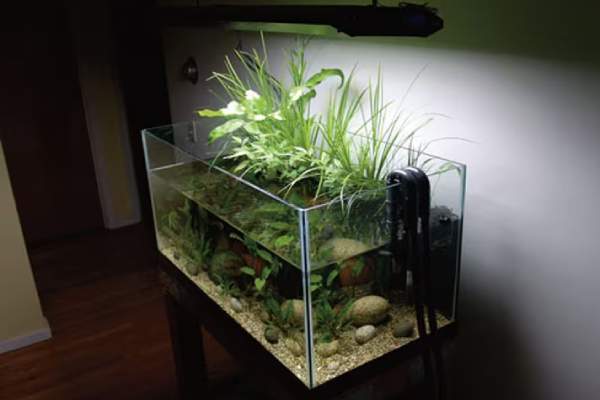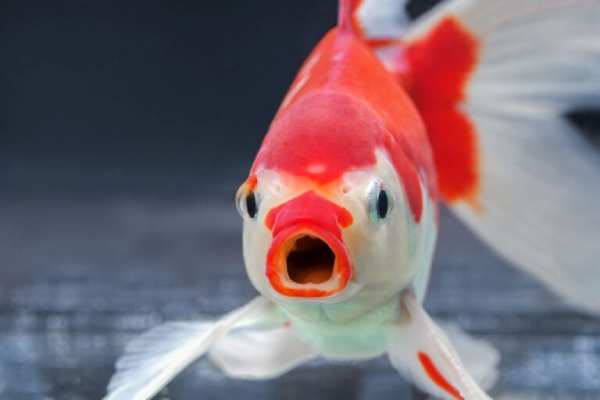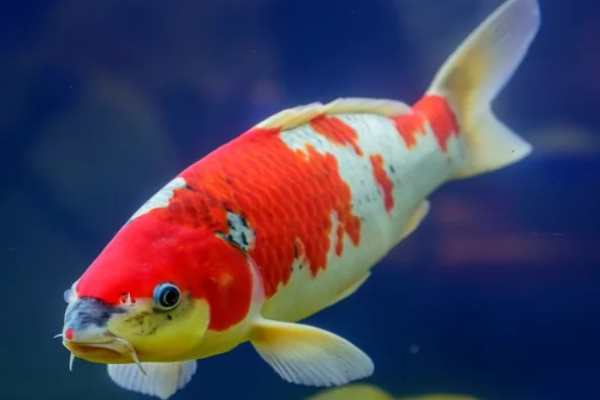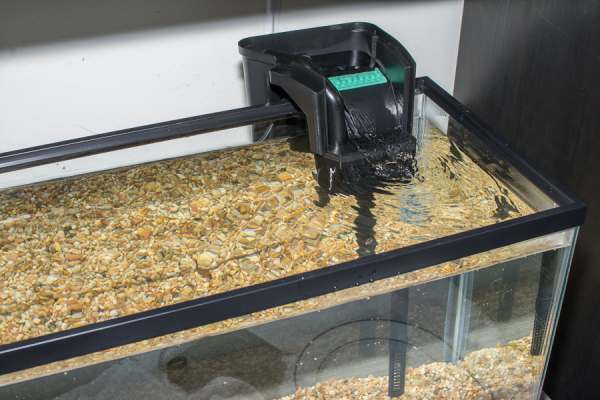What Is a Biotope Aquarium? Types & Classification
In this article, we will be delving into what a biotope aquarium is, we are going to show you the types of biotope tanks likewise the classification of biotope aquariums.
We at AquiFacts have used this type of aquarium for years now and through our experience so far with it, we believe we can point you in the right direction on the topic.

As you already know, aquarium hobby is a hobby that if there is one thing that stands out, it is because of the great possibilities it offers us when creating an assembly or project. But if two styles are currently on the rise, they are landscaping aquariums, or aquascaping, and biotope aquariums.
In this article we will begin by describing this type of aquarium based on its definition and then give you a series of tips to help you create the setup you have dreamed of so much. Subsequently, we will show you a classification unknown to the vast majority of fans that will help you refine the assembly more and more. To finish, we will give a brief touch on the most common biotopes… or maybe not… who knows!
Is it what you expected? Have you been left wanting more? Well, let’s dive in!
What is a biotope aquarium?
A biotope aquarium is a manmade ecosystem made to recreate a certain habitat in which different species coexist. This means various species and elements of living organisms are being correctly selected and grouped together to coexist.
A biotope is a territory or vital space whose environmental conditions are suitable for the development of a certain community of living beings.
It could be defined in many ways, but at the end of the day, it is bringing a piece of nature to your home while respecting absolutely everything: species, parameters, weather conditions and even the different fluctuations produced in an aquatic, or semi-aquatic, environment by the changes of season.
Without a doubt, the biotope aquarium is par excellence the one that will give rise to a perfect and harmonious coexistence, since all the living beings introduced will share practically the same needs and we will be able to enjoy the compartments of each species to the fullest.
Aside from the fact that the aquatic organisms and the ecosystem created enable them to coexist it also gives aesthetics that cannot be matched to your house, garden, or room.
Tips for starting a biotope aquarium properly
Want to know how to make a biotope aquarium? Let’s show you our vision of biotope aquariums.
Although you may not get to learn everything right here, we will make your time here worth it, and you will discover the wonderful world behind all this.
What we want to show you, in short, is the “concept” of a biotope aquarium. In many conversations with other colleagues, more than once we have heard the typical comment: that biotopes are 4 poorly thrown sticks.
Well yes, perhaps at first glance, if you do not understand the concept it may seem true, because if something characterizes this type of aquarium (in most cases) it is the simplicity that they appear.
Yes, they appear… because behind those four badly thrown sticks there are months of research, study and even conversations with people who live in the places you want to recreate to gather the maximum and most objective information possible.
It could be said that achieving this simplicity entails enormous complexity. And contrary to what seems to say that something simple is difficult… that’s right.
The most complicated thing when setting up a biotope aquarium is finding the information on your own and making it as objective as possible. A very common mistake is to go to the Internet and expect to find all the information at your fingertips, and what is even worse, make use of said information without verifying it.
Research, research, research is the key to a “perfect” biotope aquarium. You are not going to set up an aquarium but a habitat.
Among many other things, you will have to find out about the species that inhabit and coexist (which are not the same), the lighting periods, the type of light and how it penetrates the water, the type of water, the presence of organic matter decomposing or not, the type of existing substrate, the type of trees that are on the banks in order to know what leaves and wood can be found in the water and you can even take it to the extreme by simulating seasonal changes… among many other things.
All those small details will make your biotope unique, that you will enjoy it, that you will continually learn, that you will maintain the spirit of improvement, and, most importantly, that you will unite with nature and care about the sustainability of natural environments. This is the concept!
Classification of biotope aquariums
Until a few years ago, we differentiated some biotopes from others based on the word “strict” but… What is something strict for you? It is a very ambiguous term that leads many fans to confusion and, in the vast majority of cases, to discussion.
“I’m going to set up an Amazonian biotope…” What would you understand yourself if they told you that? We imagine that the only thing you would know is that, in fact, the fish will be Amazonian.
Well, one day we found a German-speaking group that classified their biotope aquariums as follows:
- B1, Biotope Aquarium: We are faced with a perfect biotope aquarium. The necessary conditions are that both fish and plants coexist and together form what we showed you at the beginning that the RAE defines as a biotope. That is a community of living beings. For this reason, we stressed before that it is not about them living in the same place, but rather about living together.
Example: This type of biotope aquarium is usually defined by the exact coordinates of the recreated location. Come on, everything to the millimeter. - B2, Aquatic System: In this case, we would find ourselves facing what we have been differentiating in the previous point. All living beings inhabit the same place, for example, the Nanay River, but they do not coexist together in a specific area of said river. They call it the Aquatic System. Do you see the difference? Example: Nanay River Biotope
- B3, Thematic aquarium: Finally, here we would find those aquariums that present species that live in similar places, but in different aquatic systems. That is, for example, an aquarium in which there were species from the Amazon and Nanay rivers (a tributary of the former). They are two different environments, but all the species that live in both require very similar, if not equal, needs. That is to say, not even here we could classify the famous and commonly widespread “Amazonian Biotope”, as it would still be too subjective. Example: Biotope of the Amazon River and Nanay.
From our point of view, it is the best classification of biotope aquariums that we have known in the more than 10 years that we have been maintaining aquariums and in the 4 that we have been trying to make biotopes.
We have chosen Amazon as an example since it is the one that has created the most conflict in the classification and the one that is still frequently seen on social networks and forums.
An aquarium with tannins, sand, dwarf cichlids and an Amazon sword… is not a biotope aquarium even if in practice it is defined as such.
It should also be noted that if we are talking about a biotope aquarium, we must not only take into account the species of the different fish, but also all living beings, so plants also play a determining role, especially when simulating a submerged habitat.
That is to say, if we put an anubia in an Amazonian aquarium… we should not use the word biotope, for the simple reason that anubias are plants from Africa.
Main types of most common biotope aquariums
Currently, the most common biotopes and the ones that you will hear the most from other colleagues are: Amazonian, Asian, and African.
We are not going to make specifications since we consider that it would be too ambitious on our part to present the previous biotopes in 4 lines. Mainly because we would not be objective, since they should not be classified as a biotope aquarium for the simple fact of having species from the same continent.
In any of the rivers or continents, given their great geographic extension, both the different climates and geographical features give rise to multiple biotopes, so generalization, in this case, leads to a serious error. For example, an African biotope can be:
- Lake Tanganyika biotope
- Lake Malawi biotope
- Biotopes of brackish waters in which the different deltas would be included (and each delta will have different conditions so a large branch of different habitats would be reopened)
- Biotopes of Niger River: Congo, Niger, Zambezi, Senegal… (all the rivers in Africa would be included, so it would not make sense either. In one river there will be different species, materials, climate, etc. than in another.
Do you see what we mean? A biotope aquarium represents a certain habitat, not an entire river, much less a continent. The following two images are of the Niger River. Do you think that the same type of species or the same type of materials will be found in both?

And to finish and show you once again what a biotope is, we leave you another definition:
Biotope : area of uniform environmental conditions that provides living space for a set of flora and fauna.
We hope this article has been of interest and has helped you get closer to this magnificent branch of the hobby. Without a doubt, if you like to investigate and enjoy a piece of nature in your own home, biotope aquariums are your thing.
Read Also: The 10 Best Aquarium Filters – Maxxi, SunSun E.t.c.
What did you think? You can leave us your impressions in the comments. For us, they are authentic works of art… If you liked it, we would greatly appreciate it if you would share it with your other colleagues or groups of aquarists.






